

The Flipped Classroom Infographic: Turning Traditional Education On Its Head. Flipped Class Methodology. A COMPLETE CYCLE of FLIPPED LEARNING by laura mammoli on Prezi. A COMPLETE CYCLE OF FLIPPED LEARNING -file. Reimagining Classrooms: Teachers as Learners and Students as Leaders.
Thank you for sharing. Truly. I am currently in a lead role with the Digital innovation team. We work for a for-profit adult education provider. I am also an adult educator, learner, and mother of two, 5 and 8. I’m interested in the shift from pedagogy to andragogy and heutogogy. I’m particularly interested in peer-observation and how this can be reimagined. I cried toward the end of the video while experiencing an A-ha moment. Did this video in any way impact your views on learning? – rachaeldigitalinnovation
What Is Blended Learning? Login Login What Is Blended Learning?
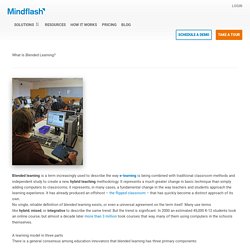
Blended learning is a term increasingly used to describe the way e-learning is being combined with traditional classroom methods and independent study to create a new, hybrid teaching methodology. It represents a much greater change in basic technique than simply adding computers to classrooms; it represents, in many cases, a fundamental change in the way teachers and students approach the learning experience. It has already produced an offshoot – the flipped classroom – that has quickly become a distinct approach of its own. No single, reliable definition of blended learning exists, or even a universal agreement on the term itself.
TRADITIONAL vs FLIPPED. The Flipped Classroom Model. The Flipped Class: Overcoming Common Hurdles. F.C. METHODOLOGY. What is Flipped Classroom Methodology?
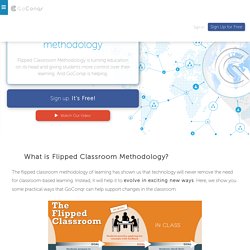
The flipped classroom methodology of learning has shown us that technology will never remove the need for classroom-based learning. Instead, it will help it to evolve in exciting new ways. Here, we show you some practical ways that GoConqr can help support changes in the classroom. The flipped classroom methodology is a form of blended learning that focuses on getting students to engage more with their learning material. While the standard classroom learning model sees information being transferred from the teacher to the students, the flipped classroom methodology uses educational technology to give students information outside of class time through tools such as videos, slides and notes.
How is it Effective? Educators who’ve used the flipped classroom methodology believe that it supports active rather than passive learning as students are afforded the time they need to process information before they enter the classroom. My Favorite WSQ. Please see the "revisited" version of this post, published in July of 2016, by clicking here.
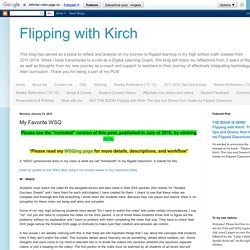
*Please read my WSQing page for more details, descriptions, and workflow* The 6-Step Guide To Flipping Your Classroom. Embed Code Embeded for hosted site: Click the code to copy <div class='visually_embed'><img class='visually_embed_infographic' src=' alt='The 6-Step Guide To Flipping Your Classroom' /><div class='visually_embed_cycle'></div><script type='text/javascript' src=' class='visually_embed_script' id='visually_embed_script_163456'></script><p> From <a href=' Embeded for wordpress.com:
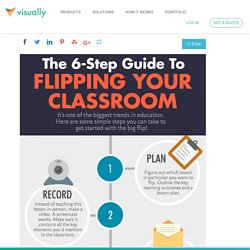
KEYCONET - EU RECOMMENDATION on KEY COMPETENCES. What is KeyCoNet?
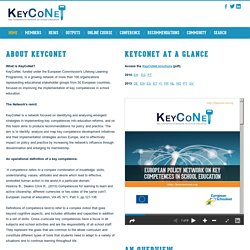
KeyCoNet, funded under the European Commission's Lifelong Learning Programme, is a growing network of more than 100 organizations representing educational stakeholder groups from 30 European countries, focused on improving the implementation of key competences in school education. The Network's remit: KeyCoNet is a network focused on identifying and analysing emergent strategies in implementing key competences into education reforms, and on this basis aims to produce recommendations for policy and practice. The aim is to identify, analyze and map key competence development initiatives and their implementation strategies across Europe, and to effectively impact on policy and practice by increasing the network's influence through dissemination and enlarging its membership.
The importance and definition of competences. Key Points on Teaching Key Competences. The Flipped Classroom Guide for Teachers. As technology becomes increasingly common in instruction at all levels of education from kindergarten to college, the modern classroom is changing.
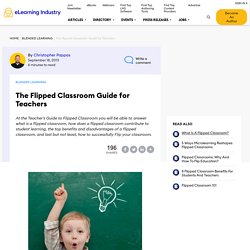
The traditional teacher-centered classroom is falling away to give students a student-centered classroom where collaborative learning is stressed. One way educators are effectively utilizing online learning and changing the way they teach is by flipping their classrooms. What is a Flipped Classroom? High school teachers Aaron Sanns and Jonathan Bergman were the first to flip their classrooms. The Flip started when these teachers began supplying absent students with an online lecture they could watch from home or from wherever they had access to a computer and the Internet, including school or the local library. In order to watch this video you need to have advertising cookies enabled. The Flipped Classroom Model: A Full Picture. Due to Khan Academy’s popularity, the idea of the flipped classroom has gained press and credibility within education circles.
Briefly, the Flipped Classroom as described by Jonathan Martin is: Flip your instruction so that students watch and listen to your lectures… for homework, and then use your precious class-time for what previously, often, was done in homework: tackling difficult problems, working in groups, researching, collaborating, crafting and creating. Classrooms become laboratories or studios, and yet content delivery is preserved.
Flip your instruction so that students watch and listen to your lectures… for homework, and then use your precious class-time for what previously, often, was done in homework: tackling difficult problems, working in groups, researching, collaborating, crafting and creating.
eTwinning Learning Event on Flipped Class. Untitled. WHAT IS FLIPPED CLASS. Have 'summative' assessments become obsolete? We hear the terms 'formative' and 'summative' assessments all the time in schools.

As educators, we learned about the differences while in college in our education preparation courses. We now talk all the time about using assessments to 'drive' our instruction and provide guidance on where students are in the learning process. I'm struggling though with how these terms are actually being implemented in classrooms with real teachers and real students... To ensure we are all on the same page here with definitions, here is an image: Formative assessments are a part of the learning process while summative assessments are an end to the learning process. So, if we are formatively assessing students frequently throughout the learning process and constantly getting temperature checks on where they are in the learning process, we will eventually have students all over the place in terms of their learning. So my questions are simple...
FLPC1 RUBRIC. A Visual Chart on Summative Vs Formative Assessment. February 5, 2014 This post is born out of a discussion I had with a fellow teacher on the Facebook page of Educational Technology and Mobile Learning on the differences between summative and formative assessment.
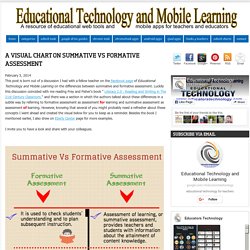
Luckily this discussion coincided with me reading Frey and Fisher's book " Literacy 2.0 : Reading and Writing in The 21st Century Classroom. " and there was a section in which the authors talked about these differences in a subtle way by referring to formative assessment as assessment for learning and summative assessment as assessment of learning. However, knowing that several of you might probably need a refresher about these concepts I went ahead and created the visual below for you to keep as a reminder. Besides the book I mentioned earlier, I also drew on Eberly Center page for more examples. Online Activities and Assessment for the Flipped classroom. AN EXAMPLE of a full cycle : DIGITAL STORYTELLING.